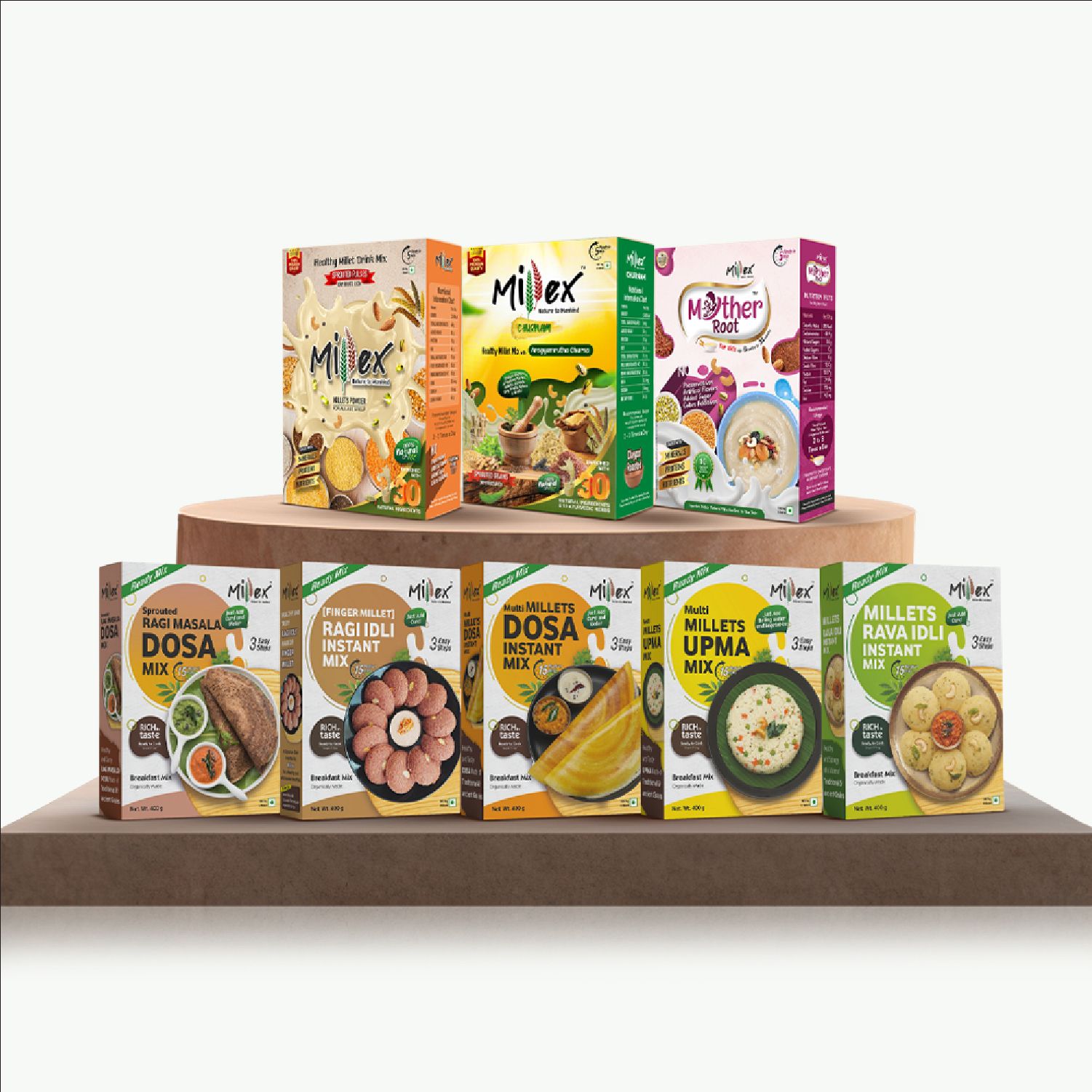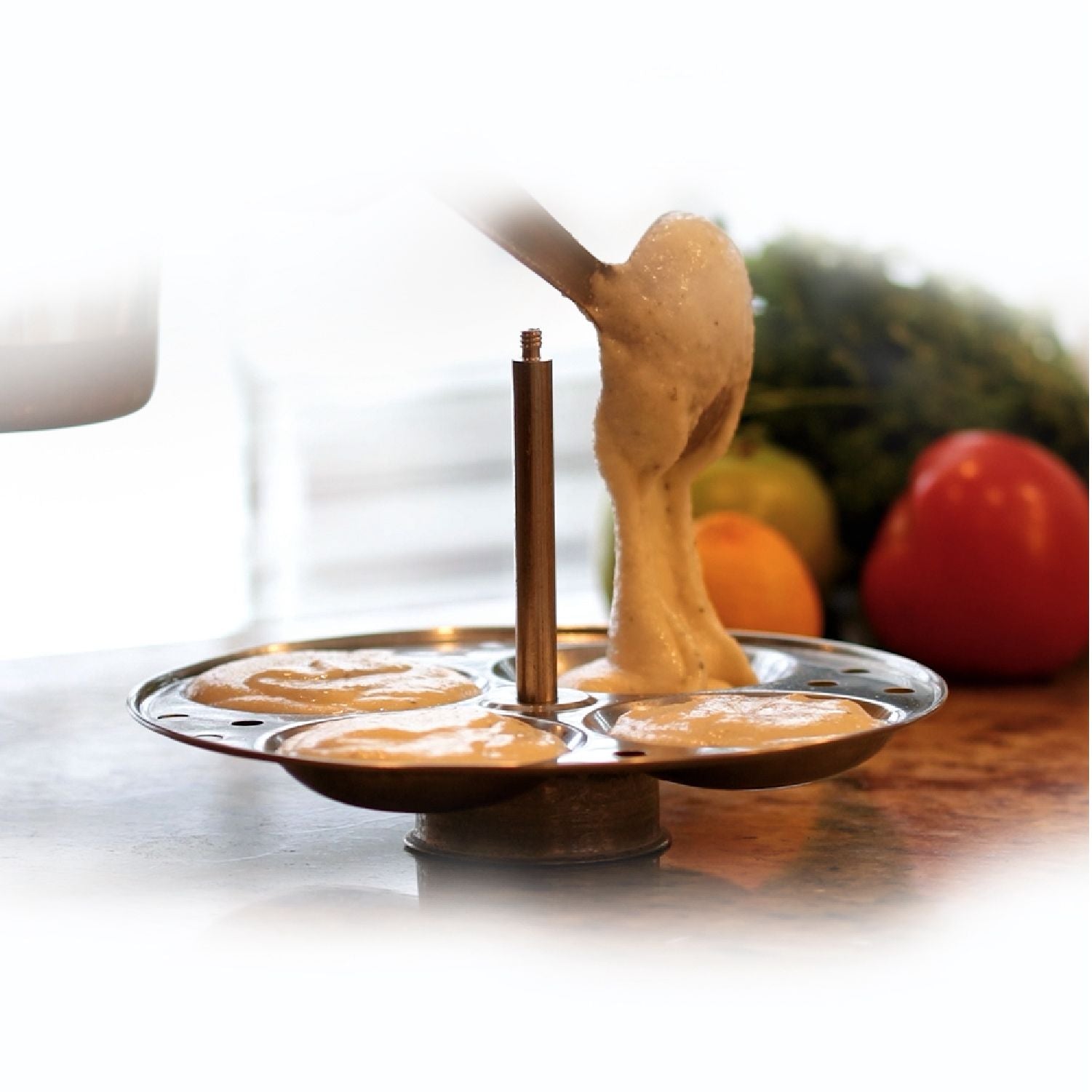Are you struggling to manage your weight in your normal food? Consider including millet in your regular food!! Seriously, this will be a game changer in your weight loss journey. There is an array of millet in the Indian culinary system. Millet and weight loss go hand in hand due to millet's high fiber content, which promotes satiety and aids digestion. When it comes to weight loss, choosing the right millet can play a significant role in achieving your goals. Two popular millets that have gained attention for their weight loss benefits are jowar and bajra. Here, you can see a detailed comparison of Jowar and Bajra to understand which might be more beneficial for weight loss.
What is Jowar?
Jowar, also known as sorghum, is a fiber-rich millet widely grown in India. It is considered a healthier alternative to refined flour or all-purpose flour. Jowar is a flowering grass plant from the Poaceae family grown all over the world, including Australia, Africa, Asia, and Central America.
What is Bajra?
Bajra is an Indian name for pearl millet. It is among the oldest cultivated grains. It is commonly consumed in rural India and is available throughout the world. It contains a wide range of nutrients and offers numerous health advantages.
Nutritional Composition
Jowar is known for its high fiber content, which assists digestion, combats obesity, and helps maintain appropriate blood sugar levels. It is high in vitamins, minerals, vital amino acids, and protein, making it a complete grain for good health.
Bajra is an insoluble fiber, magnesium, potassium, and calcium powerhouse. It offers benefits like dilating blood vessels, improving circulation, lowering cholesterol, enhancing heart health, regulating diabetes, and controlling blood pressure.
Weight Loss Benefits

BUY NOW
Jowar has a low glycemic index and is high in antioxidants and dietary fiber, which help to control blood sugar levels, decrease hunger, reduce calorie consumption, and aid in weight loss. Due to its high vitamin content and ability to regulate hunger, it is regarded as one of the greatest grains for weight loss.
On the other hand, Bajra helps with weight loss due to its high fiber content, low glycemic index, and nutrient density. It induces satiety, regulates blood sugar, and controls calories, making it an excellent complement to a weight loss plan.
Additional Health Benefits
Apart from weight loss, jowar offers benefits like improving hemoglobin levels, preventing osteoporosis and arthritis, and supporting cardiovascular health. It is a gluten-free grain that provides a wholesome alternative to traditional wheat roti.
Bajra is known for its immunity-boosting properties, regulation of blood sugar levels, and gradual energy release, making it an ideal choice for winter consumption. It is rich in minerals like iron, phosphorous, potassium, and magnesium, essential for general health and well-being.
Final Verdict
Jowar and Bajra have unique qualities that benefit weight loss and overall health. Incorporating a variety of millets into your diet can provide a holistic approach to weight management and well-being. Thinking about where you can get a high-quality millet mix? Buy millet mix powder for weight loss from Millex, a convenient and nutritious solution to support your wellness goals.
Achieve your fitness goals! The best time to eat millet for weight loss is at breakfast. Pair it with protein for a satisfying start to your day.
1. What is the nutritional difference between jowar and bajra?
Jowar (sorghum) is rich in protein, dietary fiber, and antioxidants. Bajra (pearl millet) is also high in protein and fiber but has more iron and is a better source of magnesium compared to jowar.
2. Which is better for weight loss, jowar or bajra?
Both jowar and bajra are excellent for weight loss due to their high fiber content. However, jowar has a slightly lower calorie count and glycemic index, making it a preferred choice for weight watchers. Bajra is more suitable for those looking to boost their iron intake.
3. How do jowar and bajra differ in terms of taste?
Jowar has a milder, slightly sweet taste, while bajra has a nutty, more earthy flavor. Bajra tends to be denser, while jowar has a softer texture when cooked.
4. Can jowar and bajra be eaten by people with gluten intolerance?
Yes, both jowar and bajra are gluten-free, making them safe options for people with celiac disease or gluten intolerance.
5. Which millet is better for controlling blood sugar levels, jowar or bajra?
Jowar is generally considered better for controlling blood sugar due to its lower glycemic index. However, both grains are good for diabetics when consumed in moderation as part of a balanced diet.
6. Which one is easier to digest, jowar or bajra?
Both jowar and bajra are relatively easy to digest, but bajra is known to generate more heat in the body, which might cause discomfort for some individuals in hot climates. Jowar is considered lighter on the stomach.
7. Can jowar and bajra be consumed in the same way?
Yes, both jowar and bajra can be used to make roti, porridge, and other traditional Indian dishes like khichdi or upma. However, bajra roti tends to be slightly heavier and denser than jowar roti.
8. Which millet is better for boosting energy?
Bajra is known to provide more sustained energy due to its high magnesium and iron content, which supports oxygen transport and muscle function. Jowar is also a good source of energy but provides a lighter feel.
9. Are there any seasonal preferences for consuming jowar and bajra?
Bajra is often consumed in winter as it generates more heat in the body, while jowar can be eaten year-round, including in summer due to its cooling properties.
10. Which one is more sustainable to grow, jowar or bajra?
Both jowar and bajra are drought-resistant and environmentally sustainable crops, but jowar is slightly more versatile as it grows well in both tropical and temperate climates, whereas bajra prefers arid or semi-arid regions.






